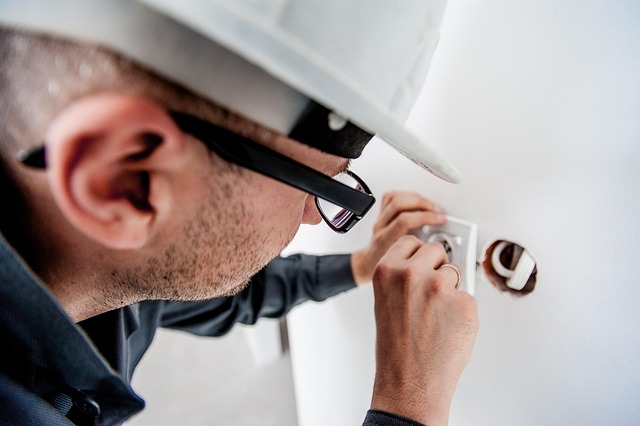Upgrading from old fuses to modern circuit breakers enhances electrical safety and system efficiency. Circuit breakers offer superior protection against power surges, automatic trip mechanisms for safety, and easier installation/replacement compared to fuses. Before replacing fuses, electricians must shut off power at the main panel, use voltage testers, wear safety gear, identify fuse ratings, and carefully replace them to avoid damage. This process prioritizes safety and is recommended by professionals for outdated wiring.
Looking to upgrade your home’s electrical safety? It’s time to replace old fuses with modern circuit breakers. This simple switch can significantly enhance your electrical system’s functionality and protection. Electricians often recommend this upgrade due to the limitations of traditional fuses, such as their lack of automatic shut-off during overloads. In this article, we’ll guide you through understanding the issues with old fuses and the numerous advantages of modern circuit breakers, followed by a step-by-step process for an easy DIY replacement.
- Understanding Old Fuses and Their Limitations
- The Advantages of Modern Circuit Breakers
- Step-by-Step Guide to Replacing Fuses with Circuit Breakers
Understanding Old Fuses and Their Limitations

Understanding old fuses and their limitations is key for any electrician looking to modernise a home’s electrical system. Fuses, once a standard safety feature in homes, were designed to protect circuits from overloading. However, they have several drawbacks. Firstly, they can only handle a specific current, meaning they frequently blow when there’s an excessive load, leading to frequent replacement and potential inconvenience. Secondly, they don’t offer the same level of protection as modern circuit breakers, which can trip to prevent damage and fire hazards. Moreover, old fuses lack the versatility of circuit breakers; they cannot be reset or adjusted, requiring a complete replacement every time they blow.
These limitations make it clear why upgrading from old fuses to modern circuit breakers is beneficial for homeowners and electricians alike. Circuit breakers provide enhanced safety, enabling them to detect issues early and protect against overloads and short circuits. They also offer the advantage of being easily reset, ensuring minimal disruption during a power surge or temporary overload. This transition requires the expertise of a qualified electrician who can safely replace outdated fuses with modern circuit breakers, contributing to a safer and more efficient electrical system.
The Advantages of Modern Circuit Breakers

Modern circuit breakers offer several advantages over traditional fuses, making them a preferred choice for electricians and home owners alike. One of the key benefits is their ability to protect against power surges, which can cause significant damage to electrical systems. Circuit breakers trip automatically when they detect an excessive flow of electricity, preventing potential fires or other hazards. This feature is especially valuable in homes with older wiring that may be less capable of handling modern appliances and electronics.
Additionally, circuit breakers are much easier to install, maintain, and replace compared to fuses. They come in various types and ratings, allowing electricians to choose the right breaker for each specific circuit based on its load requirements. This adaptability ensures efficient power distribution and enhances overall electrical safety, making it a smart upgrade for any property.
Step-by-Step Guide to Replacing Fuses with Circuit Breakers

Step-by-Step Guide to Replacing Fuses with Circuit Breakers
1. Safety First: Before beginning, turn off the power at your main electrical panel using the main circuit breaker or fuse box switch. Verify that no current is flowing by using a voltage tester. Safety gear, including gloves and protective eyewear, should be worn by the electrician for protection against electric shocks.
2. Locate and Identify Fuses: Find the old fuses you want to replace. Examine them closely to understand their rating (ampere or amperage) and type. Not all circuits require the same type of protection, so identifying these details is crucial. The electrician will then remove the old fuses using a suitable tool, like a fuse puller, ensuring no damage occurs to the wires or the panel.
Upgrading from old fuses to modern circuit breakers is a smart move for any homeowner or electrician. By embracing this simple yet effective change, you gain enhanced safety features, improved convenience, and better protection for your electrical system. With these advantages in mind, it’s clear that making the switch is a practical step towards a more efficient and secure home environment, ensuring peace of mind for years to come. Consider reaching out to a qualified electrician to guide you through this process and reap the benefits of modern circuit breakers.
